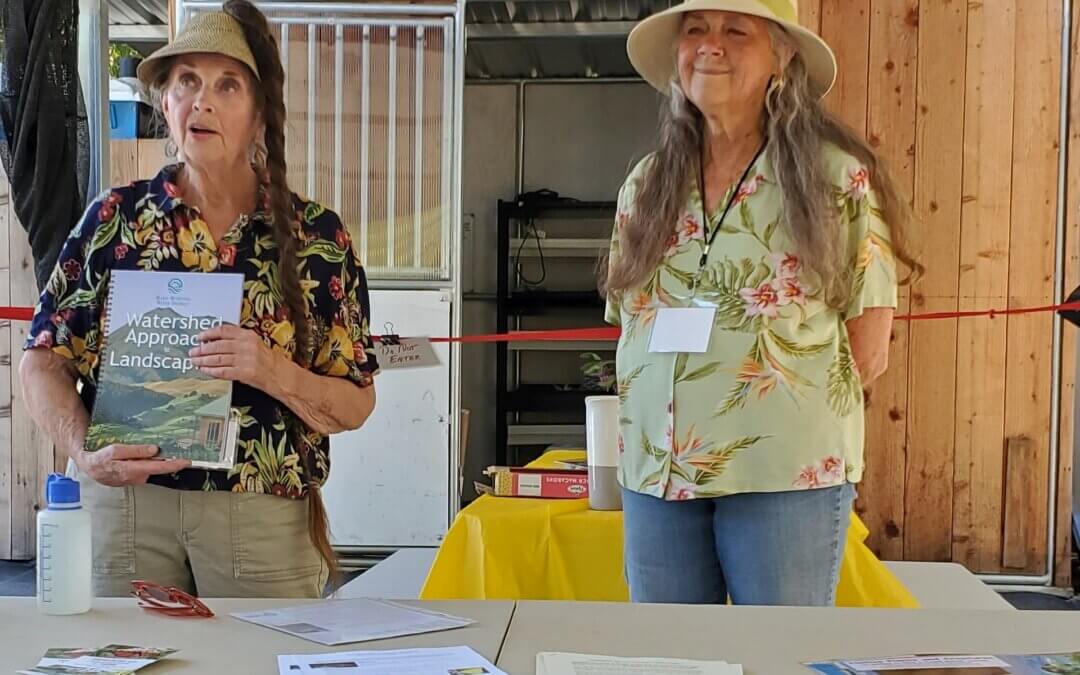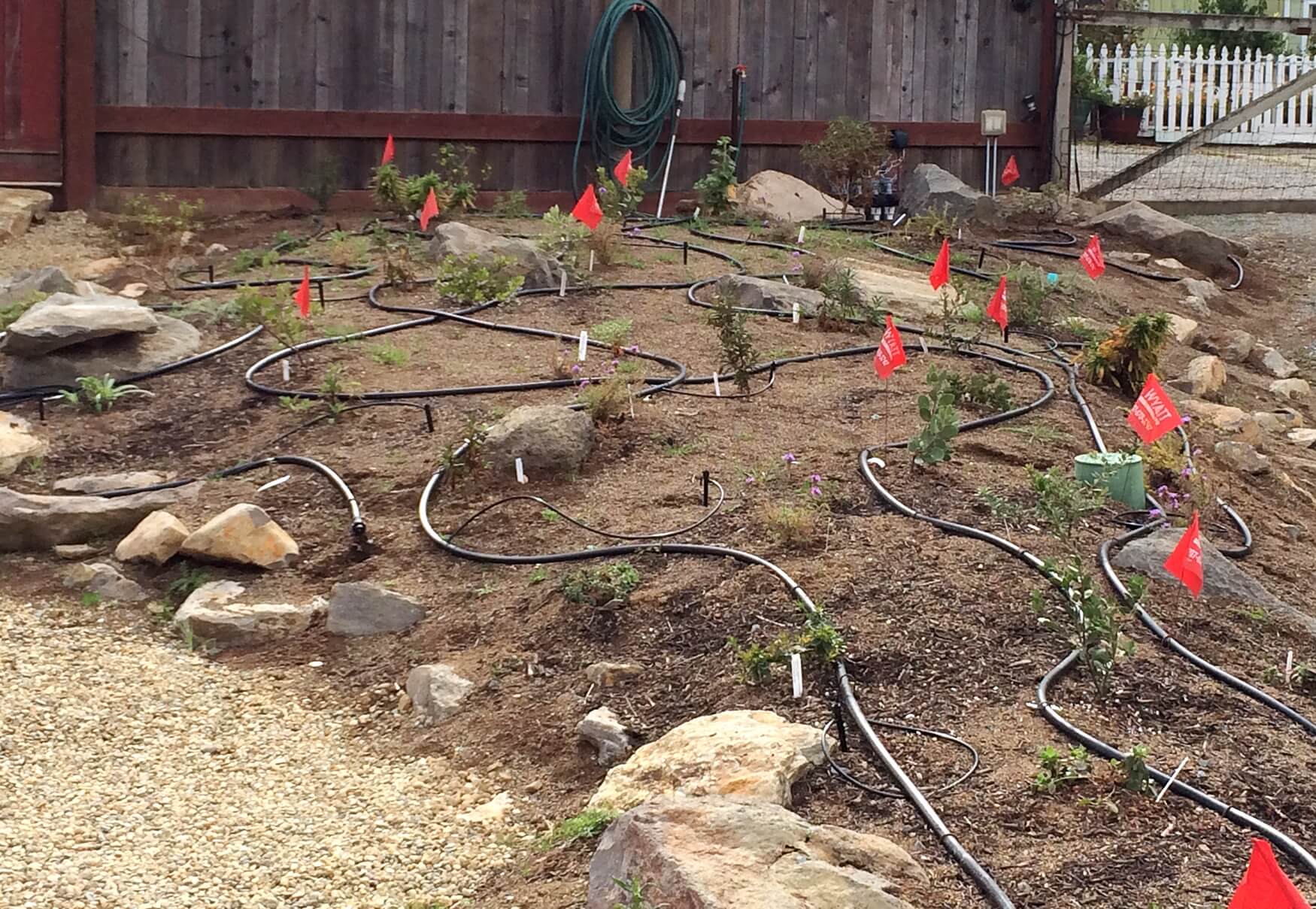
Watering Know-How

Here in northern California we really only have three seasons: the rainy season, the season of wildflowers, and the dry, dormant season. Native plants and plants native to other Mediterranean climates around the world are adapted to grow and thrive in these conditions. The goal of many native plant gardeners is to create gardens that, once established, need little more than what nature provides.
Gardeners using sustainable methods will create soils that help slow, spread, and sink rainwater to keep it on site. They create swales to capture rainwater and irrigate plants, and build gardens with as many permeable surfaces as possible to avoid excessive run-off.
Plants with similar water needs are grouped together in hydrozones, each watered by a separate irrigation valve. Specialized irrigation systems such as in-line drip, individual emitters, or low-flow sprinklers are utilized so that a minimum amount of water is used to keep plants at their best. Either at the start or the end of the rainy season, all irrigation systems should be flushed and checked for problems in order to make needed adjustments and repairs.
Dedicated native plant gardeners know it is best to plant out only at the start of the rainy season while the soils are still warm but never in the saturated soils right after heavy rainfall. All California gardeners should take special care when planting under our native oaks; irrigation systems should never be installed under the oaks because constant watering during the dry season will encourage a fungus that slowly kills these valuable trees. There are many beautiful California natives adapted to growing without summer water in the understory of an oak woodland, which will not pose a threat to the health and vigor of the trees.
Relevant pages on how to estimate your water needs, what kind of irrigation to use, and how to group plants by hydrozone—among many other topics—are described in the pages listed at right from the MMWD book, Watershed Approach to Landscaping, which you can download as PDFs.



